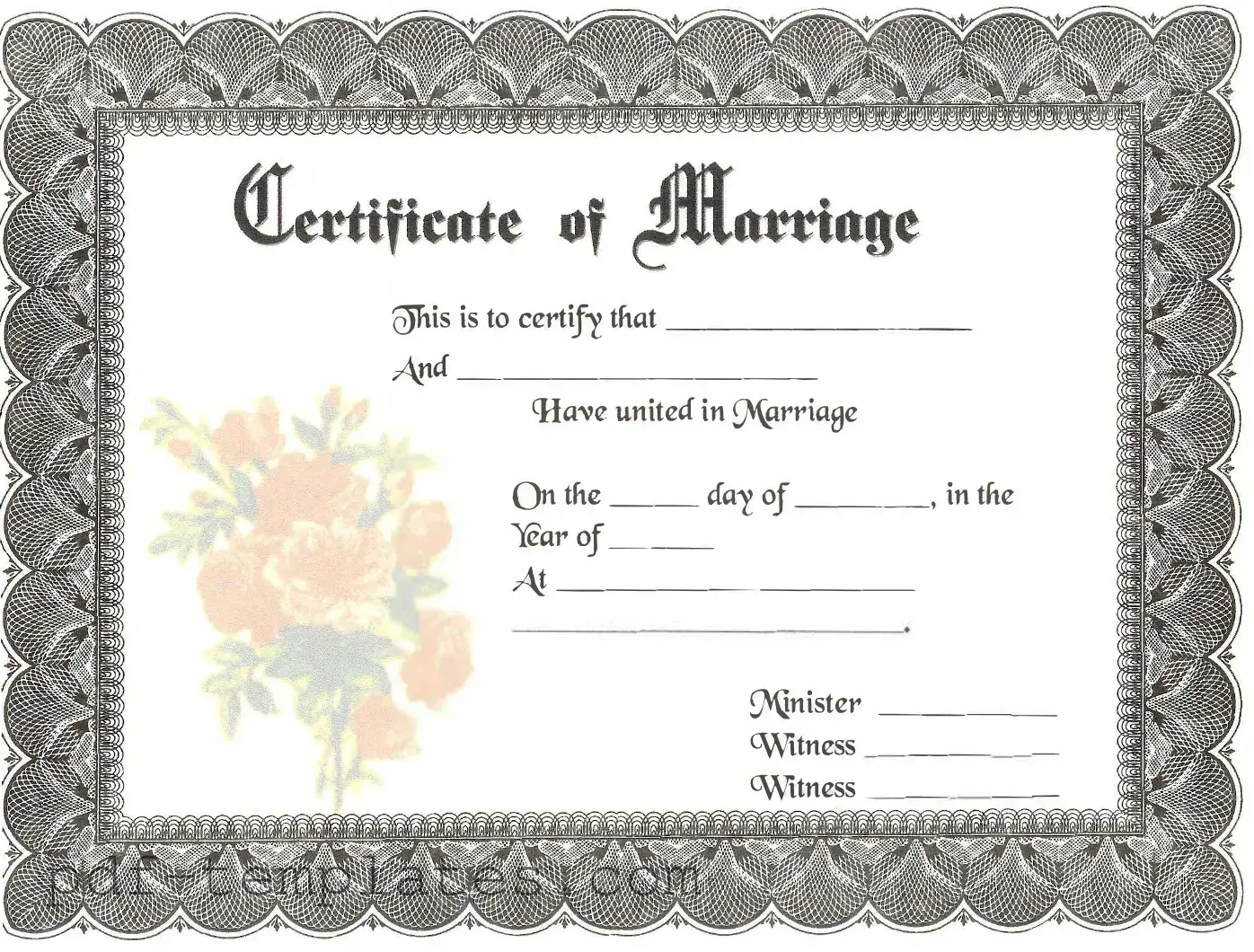The Marriage Certificate form is a crucial document that serves as an official record of a marriage between two individuals. This form typically includes essential information such as the full names of both parties, their respective addresses, and the date and location of the marriage ceremony. Additionally, the form may require details about the officiant who performed the marriage and the signatures of witnesses present during the ceremony. It is important to ensure that all information is accurate and complete, as any discrepancies could lead to complications in the future. The Marriage Certificate not only fulfills legal requirements but also holds significant sentimental value for couples, marking the beginning of their union. Obtaining this certificate often involves specific procedures that vary by state, including application processes and potential fees. Understanding the components and requirements of the Marriage Certificate form is essential for couples planning to formalize their relationship legally.
